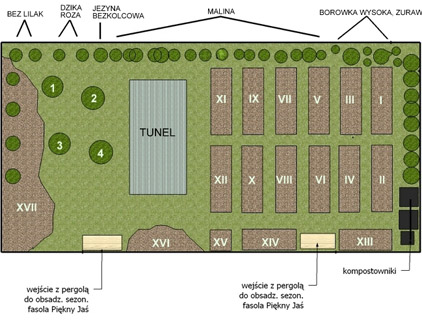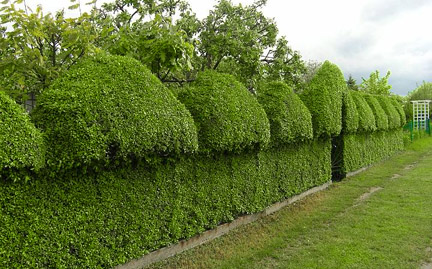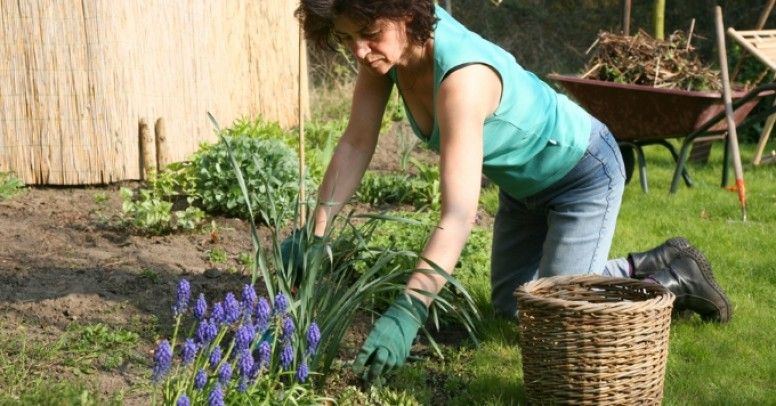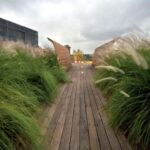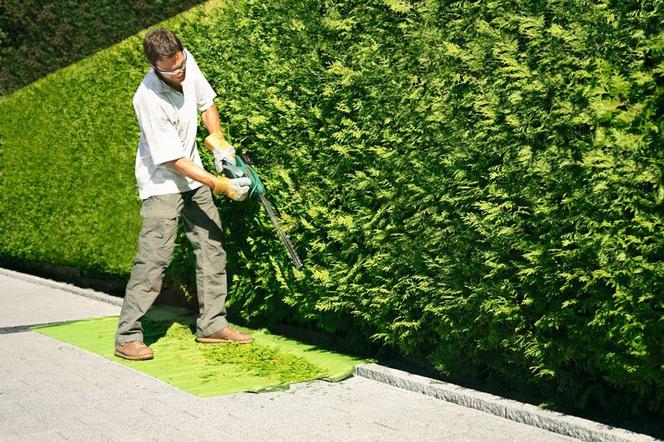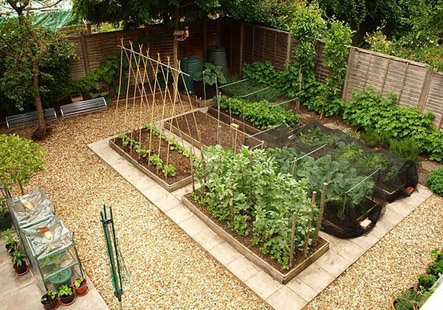 W prawidłowo urządzonym ogrodzie powinny być wydzielone części do uprawy warzyw i owoców, część gospodarcza i część wypoczynkowa. Nie powinno zabraknąć w nim roślin ozdobnych. Otacza się nimi dom i miejsce wypoczynku, które powinno znajdować się jak najbliżej domu, od strony zachodniej, południowo-zachodniej lub wschodniej. Od drogi osłania się ogród krzewami; lokalizuje się tu miejsce zabaw dla dzieci lub zbiornik wodny i sadzi atrakcyjne rośliny ozdobne. Mogą tu rosnąć również drzewa owocowe, które są także dekoracyjne. Natomiast krzewy owocowe sadzi się raczej wzdłuż ogrodzenia, zwłaszcza maliny, które prowadzi się w formie szpaleru. Truskawki sadzi się w części warzywnej, ponieważ są one włączone do płodozmianu. Warzywa wieloletnie planuje się wzdłuż ogrodzenia lub na osobnych zagonach, gdyż są one z płodozmianu wyłączone.
W prawidłowo urządzonym ogrodzie powinny być wydzielone części do uprawy warzyw i owoców, część gospodarcza i część wypoczynkowa. Nie powinno zabraknąć w nim roślin ozdobnych. Otacza się nimi dom i miejsce wypoczynku, które powinno znajdować się jak najbliżej domu, od strony zachodniej, południowo-zachodniej lub wschodniej. Od drogi osłania się ogród krzewami; lokalizuje się tu miejsce zabaw dla dzieci lub zbiornik wodny i sadzi atrakcyjne rośliny ozdobne. Mogą tu rosnąć również drzewa owocowe, które są także dekoracyjne. Natomiast krzewy owocowe sadzi się raczej wzdłuż ogrodzenia, zwłaszcza maliny, które prowadzi się w formie szpaleru. Truskawki sadzi się w części warzywnej, ponieważ są one włączone do płodozmianu. Warzywa wieloletnie planuje się wzdłuż ogrodzenia lub na osobnych zagonach, gdyż są one z płodozmianu wyłączone.
Warzywnik powinien mieć kształt prostokąta, gdyż ułatwia to prowadzenie orki. Najczęściej zajmuje on miejsce za domem lub inne, mniej eksponowane, np. z boku domu, pod warunkiem, że jest ono dobrze nasłonecznione. W części gospodarczej, sąsiadującej z warzywnikiem, umieszcza się pryzmę kompostową, buduje inspekt lub niski tunel foliowy. Powyższe zasady planowania odnoszą się zarówno do dużych ogrodów przydomowych, jak i niewielkich działek pracowniczych. W tym drugim wypadku mała powierzchnia zmusza użytkownika do dokonania trudnego nieraz wyboru między funkcją wypoczynkowo-ozdobną i użytkową działki, co najczęściej sprowadza się do ograniczenia jednej z nich do minimum. Rozstrzygnięcia dotyczącego tego, co uprawiać i na jakiej powierzchni krystalizują się z czasem. Warto tutaj podkreślić, że w każdym ogrodzie jest możliwa uprawa gatunków i odmian warzyw mniej znanych i trudno dostępnych na rynku, np. bakłażanów i karczochów, oraz roślin sadowniczych polecanych do nasadzeń amatorskich, np. borówki wysokiej.
Przeskocz do treści
Porady Inspiracje


